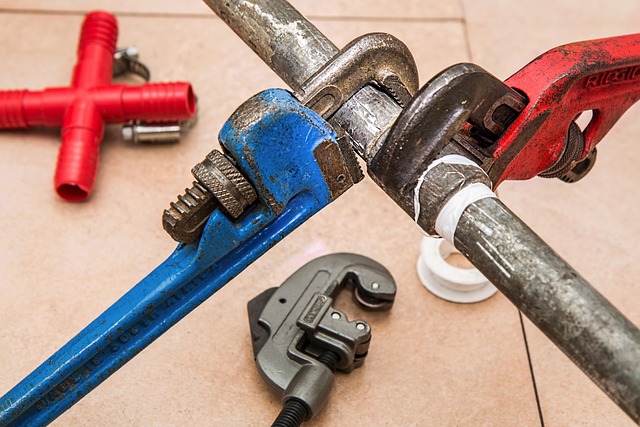Before addressing "no hot water repair" issues, shut off main water supply and drain tank for safety. Visually inspect tank and connections for damage or loose connections. For complex issues, consult a professional plumber in Bromsgrove. Regular maintenance prevents leaks and ensures efficient water heater performance. Replace minor leak repairs or consider new tank installation over 10 years old with extensive damage.
Tired of cold showers? Don’t worry, fixing a leaking water heater tank is easier than you think. This comprehensive guide will walk you through the process step by step, from identifying and assessing the leak to replacing or repairing your tank. Learn how to turn off the water supply, drain the tank safely, and perform effective no hot water repair with our detailed instructions.
- Assess the Leak: Identify the Source and Extent
- Turn Off the Water Supply: Prevent Further Loss
- Drain the Tank: Safety Measures Before Repair
- Replace or Repair the Tank: A Step-by-Step Guide
Assess the Leak: Identify the Source and Extent

Before you begin any repair work, it’s crucial to assess the leak and identify its source. Start by observing the tank for any visible signs of damage or corrosion. Check for leaks at the connections between the heater, pipes, and valve stems. Sometimes, a simple loose connection can cause a leak, making it an easy fix. However, if the issue is more complex, such as a heating element failure, diagnosing the problem accurately is key to effective repairs.
If you suspect a heating element failure, which is a common cause of no hot water repair issues, understanding the extent of the damage is essential. Inspect the elements for any signs of burning or damage, and consider the age of your water heater. In cases where the leak seems extensive or if your heater is old, it might be more economical to call an emergency plumber Bromsgrove for professional assistance rather than attempting a DIY fix.
Turn Off the Water Supply: Prevent Further Loss

Before attempting any repairs, ensuring the water supply is turned off is paramount to prevent further loss. This step is crucial, especially if you’re dealing with a no hot water issue in specific fixtures or unpredictable temperature fluctuations. Locate and close the main shut-off valve, typically found near the base of the heater, to cut off the water flow immediately. This simple action will save you from potential flooding and help you focus on fixing the problem efficiently.
By turning off the water supply, you also allow for better assessment and troubleshooting. With optimized water heater efficiency in mind, this step ensures that no energy is wasted while you work. Now, with a calm and controlled environment, you can begin diagnosing the leak, whether it’s from the tank itself or the connections, and take the necessary steps to fix it.
Drain the Tank: Safety Measures Before Repair

Before attempting any repairs on your water heater tank, it’s crucial to ensure a safe working environment. The first step is to drain the tank completely. This prevents any potential scalding or electrical hazards during the repair process. Turn off the cold water supply valve at the base of the tank and attach a garden hose to the drainage valve. Open both valves fully to release all the water from the tank. Once drained, you can assess the issue and plan the necessary repairs.
Remember, safety is paramount when dealing with hot water systems. If you’re unsure about any part of the process or identify complex issues, consider reaching out to a qualified plumber in Bromsgrove for assistance. Regular hot water heater maintenance and timely upgrades to your hot water system can prevent such leaks and ensure uninterrupted comfort in your home.
Replace or Repair the Tank: A Step-by-Step Guide

When dealing with a leaking water heater tank, the first decision point is whether to replace or repair. If the leak is minor and the tank is otherwise functional, repairing might be the more economical option. This can involve replacing gaskets, valves, or even the dip tube, all of which are common sources of leaks. However, if the damage is extensive, corrosion has set in, or your water heater is old (typically over 10 years), replacement may be the best course of action to prevent further issues and optimize water heater efficiency.
The process begins by shutting off the gas or electricity supply to the heater. Next, drain the tank to empty it of water. After that, carefully remove the old tank, taking note of its orientation for proper installation of the new one. Install a new tank, ensuring all connections are secure and sealed properly. Refill the tank with water and restore power. Test the system by turning on the heat and checking for leaks. If no leaks are detected, you’ve successfully restored hot water to your home—a task that could have been accomplished without needing an emergency plumber Bromsgrove in many cases. Remember, optimizing water heater efficiency starts with regular maintenance and prompt repairs to avoid unnecessary energy consumption and costly replacements down the line.
A leaking water heater tank can be a nuisance, but with the right steps, you can fix it and restore your hot water supply. By assessing the leak, turning off the water supply, draining the tank, and either repairing or replacing the tank, you’ll be back to enjoying a steady stream of hot water in no time. Remember, prompt action prevents further damage and potential water waste. Now that you’re equipped with this knowledge, say goodbye to unexpected cold showers!
